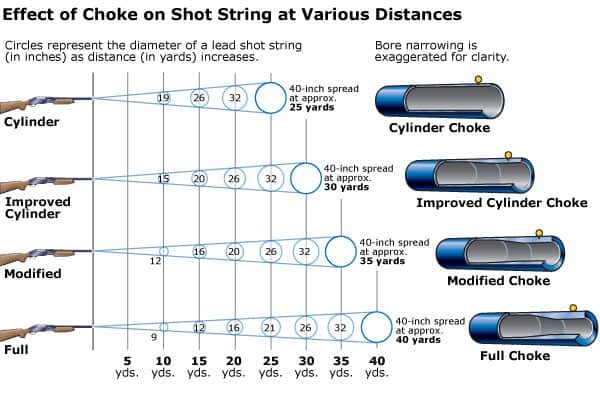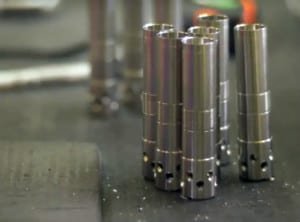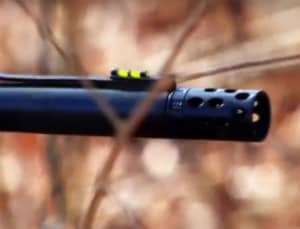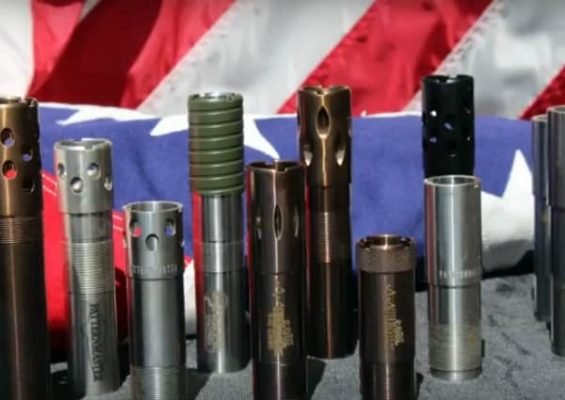Have you ever felt completely confident in your shot as you pull the trigger, only to watch your target fly away seemingly untouched? There is a good chance you might not be using the right choke. Choosing the right choke for your shotgun is no simple decision, there are a lot of factors to consider. In this article, we will discuss how to pick the right choke for your shotgun for whatever situation you might come across.
How to Choose the Right Choke for Your Shotgun
Range
First, you must decide what range the majority of your shots are going to be. Are you pass-shooting geese as they come off a refuge? Or maybe the majority of your shots are at birds finishing into the decoys. In reality, a lot of us don’t consistently shoot inside of a specific range and the shots we take vary. Unfortunately, there is not a one size fits all choke for your shotgun and you will have to decide what works best for the majority of your shots.

If you are looking for a quick answer on choosing the right choke for your shotgun, match up the range that you typically shoot to the corresponding choke.
Pattern Density
The density of your shotgun pattern is directly related to the range. With a full choke, your pattern will be denser at 40 yards than it would be with a cylinder choke. That is pretty self-explanatory. So if pattern density is related to range, why does it need to be discussed? Well, it is important to keep in mind what kind of target, or game you are shooting and how many pellets are needed secure a hit or to ethically harvest the game.
For example, if you are turkey hunting, you are going to want to put as many pellets in the head of the turkey as possible. So even if you expect your shot to be within 20 yards, it is still a good idea to go with a full choke. Also, consider how fast your target is going to be moving. Sticking with the turkey example, you should have a relatively stationary target so it is to your advantage to have a tighter, denser pattern. Now consider hunting turtle doves, which can be a bit trickier to hit. You don’t need to put ten pellets in a turtle dove to ethically harvest it, and considering how they fly, you might want to open up that pattern.
Type of Shot
 The two most common types of shot on the market are steel and lead. Depending on what shot you are going to be shooting can impact your choice of shotgun chokes. Lead is heavier and softer than steel. This means that the pellets can actually deform when shot and can cause your pattern to spread out more. In fact, in most cases, lead shotgun shells will have a less dense pattern than similar steel shells when shot from the same gun and choke. Steel shot is three times harder than steel, so the pellets will keep their round shape which helps maintain a tighter pattern.
The two most common types of shot on the market are steel and lead. Depending on what shot you are going to be shooting can impact your choice of shotgun chokes. Lead is heavier and softer than steel. This means that the pellets can actually deform when shot and can cause your pattern to spread out more. In fact, in most cases, lead shotgun shells will have a less dense pattern than similar steel shells when shot from the same gun and choke. Steel shot is three times harder than steel, so the pellets will keep their round shape which helps maintain a tighter pattern.
However, since lead is heavier than steel, it maintains more downrange energy, meaning smaller pellets can still be effective. If you are shooting steel shot, it is recommended to go with pellets that are two sizes larger than the lead pellets to maintain similar effectiveness. This brings up the last point about steel shot vs. lead shot and how it affects your shotgun choke. Since you are more likely to shoot BB, BBB, and T shot in steel, keep in mind that the steel pellets will not deform when you shoot them. This means that if you shoot these sizes out of a full choke, you can swell the choke or even the barrel of your shotgun. If you want to use a full choke with steel shot, make sure it is designed for that.
Common Types of Chokes
Chokes are simply constricting the bore of your shotgun to result in tighter shot patterns downrange. The tighter the constriction, the tighter the pattern will be. Let’s take a look at some of the common types of chokes.
Cylinder Choke
Used for shooting targets at a close distance. A good choice for self-defense, or using birdshot at close range.
- Constriction: .000
- Pattern at 40yds: 40%
 Improved Cylinder Choke
Improved Cylinder Choke
For the average hunter, the difference between a cylinder and improved cylinder choke is very minimal. You will put 10% more pellets on target at a range of 40 yards.
- Constriction: .010
- Pattern at 40yds: 50%
Modified Choke
I like to use a modified choke for my hunting shotgun. It is well suited for 30-35 yard shots. This means the pattern might be a little tight for those close shots, and a little spread out on longer shots, but it fits the majority of my shooting.
- Constriction: .020
- Pattern at 40yds: 60%
Improved Modified Choke
If most of your shots are pushing the 35-40 yard range, consider going with an improved modified.
- Constriction: .025
- Pattern at 40yds: 65%
Full Choke
This is probably the tightest constriction you will want to use for most hunting situations. Be careful shooting steel shot from a full choke.
- Constriction: .030
- Pattern at 40yds: 70%
 Extra Full Choke
Extra Full Choke
I would recommend this choke for close to mid-range turkey hunting.
- Constriction: .040
- Pattern at 40yds: 73%
Turkey Choke
These are chokes designed specifically for turkey hunting. They will help you have a tighter pattern at longer ranges in order to put more pellets in the kill zone.
- Constriction: .045+
- Pattern at 40yds: 75%+
Patterning Your Shotgun
Perhaps the best way to decide what choke to use in your shotgun is to pattern them on paper. While chokes are fairly standard, there can be differences in them beyond the amount of constriction. Additionally, while one shotgun may pattern very well at 40 yards with a full choke, another shotgun may not give the same results. I have patterned my shotgun with my typical duck hunting loads, #2’s and #4’s. I use a modified choke and it gives me excellent results at the distances I typically shoot. With that same choke, when I step up to BB pellets for goose hunting, my pattern diminishes drastically to the point that it is not viable for hunting.
The point is, no gun will be affected the same by the different styles of chokes. There are a lot of different factors that play into your final pattern density such as the type of gun, shotgun shell, pellets, and of course, the choke. The best thing to do is to go to the range and pattern your gun. Experiment with different combinations of choke, shot size, and shells until you find one that works for you. I assure you, once you have a shotgun that patterns well and gives you the proper density for your target, your shooting percentage will skyrocket.
Aftermarket Chokes
There are a large number of aftermarket chokes for a variety of different brands of shotguns. I always recommend starting with the factory chokes that come with your shotgun, as you will usually be able to find a combination that works well. However, if your shotgun didn’t come with any additional chokes, or you want to upgrade to something different, here are a few popular options.
#1 – Carlsons Waterfowl Set:
![Carlsons Choke Tubes 12 Gauge Compatible for Beretta Benelli Mobil [ 3 Pack | Close, Mid & Long Range ] Blued Steel | Delta Waterfowl Choke Tube | Made in USA](https://m.media-amazon.com/images/I/515UycI4mLL.jpg)
This set of chokes comes in at a reasonable price point for aftermarket chokes. You get three: a close range, mid-range, and long range. These are for a Beretta or Benelli 12 gauge, but Carlsons makes these chokes for a variety of different shotguns. They have been in business for 30 years and have developed a reputation for making quality products. If you bought a shotgun that only came with one choke, picking up a set of Carlsons chokes is a great way to get some extra options.
#2 – Patternmaster:

Patternmaster chokes have a unique feature that works to strip the wad from the pellets. When the wad is delayed for a split second the shot is able to separate, which results in a shot string that is up to 80% tighter. This means if you are shooting at a moving target, more of your pattern will hit at the same time, resulting in a more reliable and cleaner kill. These chokes are extremely popular among waterfowl hunters where crippling birds with steel shot can be common.
#3 – Kicks High Flyer:

This is another choke design that may give you increased performance over your standard factory chokes. They feature an extended and ported section that reduces felt recoil and muzzle jump. They also have a unique design both inward and outward, that the manufacturer will improve your pattern density by 20%. Add in a standard lifetime warranty and this is another great option if you are looking for an aftermarket choke.
Choosing The Right Choke For Your Shotgun Final Thoughts
Choosing the right choke for your shotgun is not difficult, but it is a decision that should not be taken lightly. Match your desired target and pattern density to the range you will be most likely shooting at and you will see a drastic improvement in your hunting success in terms of clean and ethical kills. Most importantly, get out to the range and pattern your new choke to make sure you are prepared for whatever shooting or hunting opportunity may come. Take the time now to choose the right choke for your shotgun, and you will not be disappointed when it comes time to use it. If you’re looking for more than what you see here, please review our Best Reloading Kit Buyers Guide and our Best Gun Safe Buyers Guide.

Mark is dedicated to improving his skills and prides himself in putting in the time and effort to be successful in the field. During the fall and winter he is focused on waterfowl hunting and will hunt every chance he has. He has a simplistic hunting style, often using only a handful of duck decoys over an ultra-low profile blind. When waterfowl season closes, you can find him fishing, camping, or at the shooting range preparing for 3 gun and IPSC competitions. Mark is passionate about hunting and the outdoors, and loves helping others get involved.

